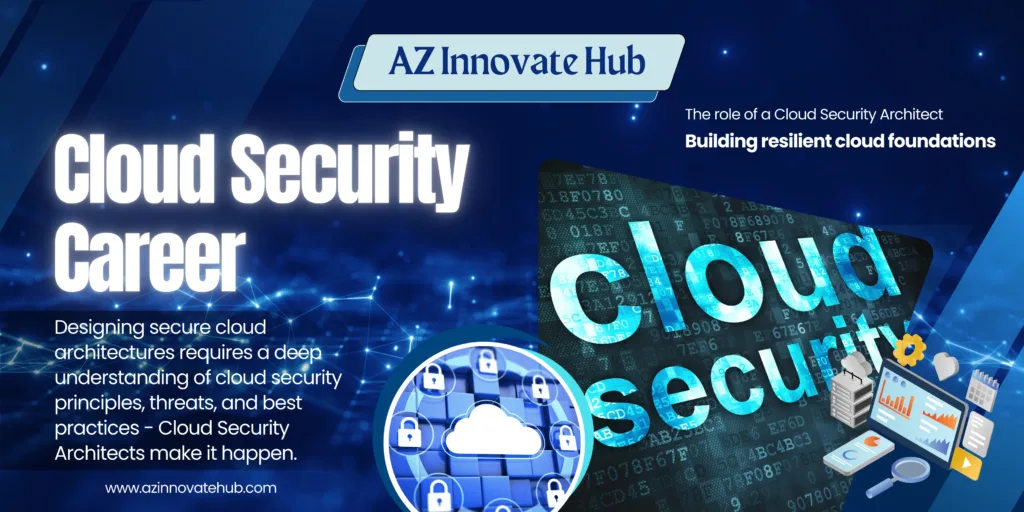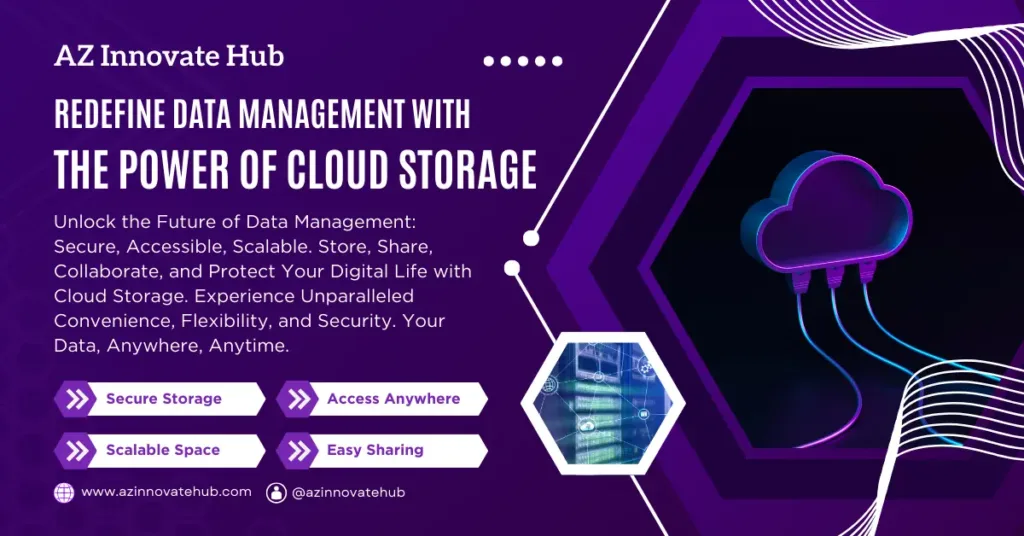
Pursuing a Career in Cloud Security: An Introduction
The digital transformation sweeping across industries has firmly established cloud computing as a cornerstone of modern business operations. As organizations increasingly migrate sensitive data, critical applications, and complex workloads to cloud environments, the imperative for robust security measures has never been more pronounced. This escalating reliance on cloud infrastructure has consequently fueled an unprecedented demand for highly skilled cybersecurity professionals specifically trained to protect these dynamic ecosystems. Roles such as Cloud Security Engineer and Cloud Security Architect are now indispensable in safeguarding digital assets against an ever-evolving landscape of threats. Projections indicate significant growth in the global cloud security market, underscoring the expanding opportunities within this vital field. If you are considering a move into this challenging and rewarding domain, understanding the required expertise is your first crucial step. This comprehensive guide outlines the critical skills, essential certifications, and practical experience needed to build a successful career as a Cloud Security Engineer or progress to roles like Cloud Security Architect, positioning yourself as a valuable asset in defending the digital frontier.
Understanding the Pillars of Cloud Security
Before diving into specific roles, it’s essential to grasp the fundamental principles that underpin security in the cloud. Cloud security is not merely an extension of traditional IT security; it involves a unique set of considerations driven by the cloud’s shared responsibility model. Under this model, the cloud service provider (CSP) is responsible for securing the infrastructure itself (the physical data centers, hardware, networking, and virtualization layer), while the customer is responsible for security in the cloud – securing their data applications, operating systems, access controls, and configurations.
Effective cloud security aims to ensure the confidentiality, integrity, and availability of cloud-based resources. This involves implementing controls and strategies across various layers, from identity and access management to data protection, network security, and continuous monitoring. As cloud environments grow in complexity, often spanning multiple providers (multi-cloud) or integrating with on-premises systems (hybrid cloud), security becomes and even more intricate challenge, requiring specialized knowledge and skills to navigate effectively.
The Strategic Role: Cloud Security Architect
The Cloud Security Architect operates at a high level, focusing on the strategic design and overarching security posture of an organization’s cloud deployments. This role is less about day-to-day operations and more about envisioning, planning, and creating the blueprints for a secure cloud future.
Key responsibilities of a Cloud Security Architect include:
- Developing Security Strategy: Defining the organization’s cloud security vision, strategy, and roadmap, aligning it with business objectives and overall cybersecurity goals.
- Security Architecture Design: Designing robust and scalable security architectures for a cloud and hybrid environments. This involves selecting appropriate security services, defining network segmentation, and planning data protection mechanisms.
- Risk Assessment and Management: Conducting comprehensive risk assessments specific to cloud adoption, identifying potential vulnerabilities, and developing mitigation strategies at an architectural level. This requires a deep understanding of cloud-specific threats and attack vectors.
- Policy and Standard Development: Establishing security policies, standards, and guidelines for cloud usage across the organizations, ensuring consistency and adherence to best practices.
- Compliance and Governance: Ensuring cloud architectures and deployments meet relevant regulatory and compliance requirements (such as GDPR, HIPAA, PCI DSS, SOC 2, etc.). This involves mapping technical controls to compliance mandates.
- Technology Evaluation and Selection: Researching, evaluating, and recommending security technologies and solutions (including “cloud security software” and “cloud based security solutions”) that integrate effectively into the cloud architecture.
- Consultation and Guidance: Providing expert security guidance to engineering, development, and operations teams on implementing secure cloud solutions.
The Cloud Security Architect is a visionary role, requiring a board understanding of technology, business processes, and the threat landscape to build resilient and secure cloud foundations.
The Implementation Role: Cloud Security Engineer
While the Architect designs the security framework, the Cloud Security Engineer is responsible for its hands-on implementation, operation, and maintenance. This is a technical, problem-solving role focused on translating architectural designs into practical, working security controls.
Key responsibility of a Cloud Security Engineer include:
- Implementing Security Controls: Configuring and deploying security services and tools within cloud platforms (like AWS, Azure, GCP). This includes setting up firewalls, intrusion detection and prevention systems, configuring access controls (IAM), and implementing encryption.
- Security Monitoring and Alerting: Setting up and managing security monitoring tools (cloud security tools) such as SIEM (Security Information and Event Management) and configuring alerts to detect suspicious activity.
- Incident Response: Participating in or leading the technical response to security incidents, including investigation, containment, and remediation within the cloud environment.
- Vulnerability Management: Identifying, assessing, and managing vulnerabilities in cloud infrastructure and applications, often using automated scanning tools.
- Automation: Developing scripts and using automation tools to streamline security tasks, enforce policies consistently, and enable faster response times. This ties into DevSecOps practices.
- Compliance Enforcement: Ensuring that implemented security controls meet defined policies and regulatory requirements through ongoing monitoring and audits.
- Collaboration: Working closely with development (DevSecOps), operations (Ops), and other IT teams to embed security throughout the system lifecycle.
The Cloud Security Engineer is a critical hands-on role, requiring deep technical expertise in cloud platforms and security technologies to build and maintain secure cloud environments effectively. They are often the first line of defense and response in a cloud security incident.
Essential Skills for Cloud Security Professionals
Success in either the Architect or Engineer role, or progressing between them, requires a strong foundation built upon a combination of technical expertise and crucial soft skills. While the depth and application of these skills may differ between the roles, the core areas are fundamental to both.
1. Foundational Cybersecurity Knowledge: A strong understanding of basic cybersecurity principles is non-negotiable. This includes:
– Network Security: Concepts like firewalls, intrusion detection and prevention, VPNs, segmentation, and secure network design are vital, adapted for cloud networking models.
– Cryptography: Understanding encryption at rest and in transit, hashing, digital signatures, and key management principles is essential for data protection.
– Threat Modeling:The ability to identify potential threats and vulnerabilities from an attacker’s perspective to inform security design and controls.
– Incident Response: Knowledge of the incident response lifecycle (preparation, identification, containment, eradication, recovery, lessons learned).
– Risk Management: Understanding how to identify, assess, prioritize, and mitigate security risks systematically.
2. Cloud Platform Expertise: Proficiency in at least one major cloud platform (AWS, Azure, or Google Cloud Platform – GCP) is mandatory, Deeper understanding of cloud-specific services and how they interact is crucial. This includes:
– Understanding different cloud service models (IaaS, PaaS, SaaS).
– Knowledge of compute, storage(cloud data security, data storage security in cloud computing), networking, and database services offered by the CSPs.
– Familiarity with specific cloud security services provided by AWS Security, Azure Security Center, Google Cloud Security Command Center, and others (cloud security services).
3. Cloud-Native Security Controls: Expertise in implementing and managing security controls that are native to cloud environments is key.
– Identify and Access Management (IAM): A deep understanding of managing user identities, roles, permissions, authentication (including MFA), and authorization within cloud platforms. This is arguably the most critical cloud security skill due to the decentralized nature of cloud access.
– Data Encryption and Key Management: Implementing encryption for data at rest (e.g. using managed encryption services) and in transit (using TLS/SSL), and securely managing encryption keys.
– Networking Security Configuration: Configuring cloud-native firewalls, security groups, network access control lists (ACLs), and virtual private clouds (VPCs) to control network traffic.
– Vulnerability Management: Utilizing CSP-provided or third-party tools to scan for vulnerabilities in cloud instances and applications.
– Logging and Monitoring: Configuring logging services (e.g., AWS CloudTrail, Azure Monitor, Google Cloud Logging) and integrating them with security monitoring tools (“cloud security tools”).
4. Automation and Scripting: Given the dynamic and scalable nature of the cloud, manual security management is inefficient and prone to errors.
– Proficiency in scripting languages (Python, PowerShell, Bash) to automate security tasks.
– Understanding Infrastructure as Code (IaC) principles and tools (Terraform, CloudFormation, ARM templates) to define and manage secure infrastructure configurations programmatically.
– Experience with automation platforms (Ansible, Chef, Puppet) for configuration management.
5. Compliance and Governance: Cloud environments must adhere to a complex web of regulations and industry standards.
– Knowledge of major compliance frameworks relevant to cloud computing (GDPR, HIPAA, PCI DSS, SOC 2, ISO 27001).
– Understanding how to map technical security controls to specific compliance requirements.
– Familiarity with tools and services that aid in compliance monitoring and reporting.
– Understanding frameworks like the “cloud security alliance cloud controls matrix” can be beneficial.
6. Threat Detection and Incident Response: The ability to detect security events and respond effectively is paramount.
– Experience with Security Information and Event Management (SIEM) systems for aggregating and analyzing security logs.
– Familiarity with Security Orchestration, Automation, and Response (SOAR) playbooks for automating incident response tasks.
– Skills in analyzing security alerts and logs to identify potential threats.
– Developing and practicing incident response plans tailored for cloud environments.
7. Cloud Security Posture Management (CSPM): As cloud environments grow, identifying misconfigurations becomes increasingly challenging. CSPM tools automate the process of continuously scanning cloud environments for security risks and compliance violations.
– Understanding the capabilities of CSPM tools.
– Ability to use CSPM platforms to gain visibility into the security posture, identify misconfigurations, and prioritize remediation efforts.
8. Understanding Hybrid and Multi-Cloud Security: Many organizations operate in complex environments spanning multiple clouds and on-premises systems.
– Knowledge of the unique security challenges introduced by hybrid and multi-cloud architectures (“hybrid cloud security challenges”).
– Familiarity with solutions designed for cross-platform security visibility and management.
9. Soft Skills: While often underrated, soft skills are critical for success.
– Communication: The ability to articulate complex technical concepts clearly to both technical and non-technical stakeholders (management, legal, compliance).
– Collaboration: Working effectively with cross-functional teams (development, operations, business units) to integrate security throughout the organization.
– Problem-Solving and Analytical Thinking: The ability to analyze security issues, identify root causes, and develop effective solutions.
– Adaptability and Continuous Learning: The cloud security landscape changes rapidly, requiring professionals to constantly learn new technologies, threats, and best practices.
Building Practical Experience
While theoretical knowledge is crucial, hands-on experience is where you truly hone your skills and demonstrate your capabilities to potential employers.
- Utilize Cloud Provider Free Tiers and Labs: All major CSPs offer free tiers and extensive documentation and labs. Use these resources to practice configuring security controls, deploying services, and experimenting in a safe environment.
- Work on Cloud Security Projects: Seek opportunities within your current role to work on projects involving cloud migration or cloud-native development, focusing on the security aspects. If internal opportunities are limited, consider contributing to open-source cloud security projects.
- Participate in Security Exercises: Get involved in vulnerability assessments, penetration testing (ethical hacking), and simulated incident response drills to gain practical experience in identifying and responding to security issues.
- Set up and Secure Your Own Cloud Environment: Create a personal cloud account and practice deploying and securing various services. Try to intentionally misconfigure things and then identify and fix them using security tools.
- Attend Workshops and Bootcamps: Many training providers offer hands-on workshops focused on specific cloud security tools and techniques.
Enhancing Your Profile with Certifications

Certifications validate your knowledge and skills to employers and demonstrate a commitment to the field. Several certifications are highly valued in the cloud security domain:
Vendor-Neutral Certifications:
- (ISC)² Certified Cloud Security Professional (CCSP): A globally recognized certification for experienced cloud security professionals, covering six domains of cloud security expertise. This is a strong indicator of a comprehensive understanding of cloud security concepts.
- (ISC)² CISSP (Certified Information Systems Security Professional): While not exclusively cloud-focused, the CISSP is a highly respected foundational security certification that demonstrates a broad understanding of information security principles, which are applicable to the cloud.
- Cloud Security Alliance (CSA) Certificate of Cloud Security Knowledge (CCSK): A foundational certificate demonstrating knowledge of CSA’s guidance and the Shared Responsibility Model. Often considered a good starting point before pursuing the CCSP.
Cloud Provider-Specific Certifications:
- AWS Certified Security – Specialty: Validates expertise in securing the AWS platform.
- Microsoft Certified: Azure Security Engineer Associate: Focuses on implementing security controls on the Azure platform.
- Google Cloud Certified Professional Cloud Security Engineer: Demonstrates proficiency in designing and implementing secure infrastructure on Google Cloud.
Pursuing a combination of vendor-neutral and vendor-specific certifications can significantly boost your credibility and marketability.
Career Progression and Outlook
The path in cloud security often begins with roles like Security Analyst or Security Engineer, progressing to Cloud Security Engineer and potentially specializing further or moving into architectural roles like Cloud Security Architect. Experienced professionals may also move into leadership positions, consulting, or specialize in niche areas like cloud threat intelligence or cloud security compliance.
The demand for cloud security professionals continues to outpace the supply, leading to competitive salaries. Factors influencing “cloud security salary” include experience level, location, certifications held, specific cloud platform expertise, and the size and industry of the employer.
Staying Ahead in a Dynamic Field
The cloud security landscape is in perpetual motion. New threats emerge, CSPs release new security features, and regulatory requirements evolve. To remain effective and advance your career, continuous learning is not optional; it’s essential.
- Stay Informed: Regularly read industry news, blogs from CSPs and security vendors, and reports on the latest threats and vulnerabilities (“cloud security breaches”).
- Follow Security Researchers: Engage with the security community on platforms like LinkedIn and attend webinars and virtual conferences.
- Experiment with New Services: As CSPs release new security features or services, take the time to understand how they work and how they can be used to enhance security.
- Understand Emerging Technologies: Keep an eye on the security implications of emerging technologies like AI, quantum computing, and serverless computing.
- Focus on Practical Application: Theory is important, but understanding how to apply security principles and use tools in real-world cloud scenarios is paramount.
Transitioning into or advancing within the cloud security field requires dedication to building a strong technical foundation, gaining practical experience, pursuing relevant certifications, and committing to continuous learning. By focusing on the essential skills outlined above, you can position yourself for a successful and impactful career safeguarding the critical infrastructure of the digital age.





Pingback: Understanding Compliance Frameworks for Cloud Data: A Comprehensive Guide - AZ Innovate Hub
Pingback: The Big Three: Comparing AWS vs. Azure vs. GCP - AZ Innovate Hub